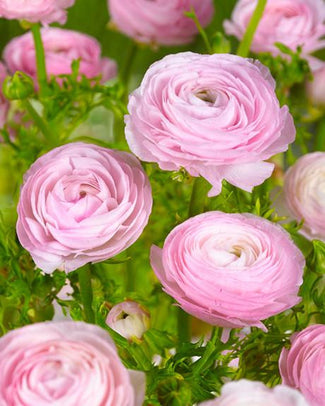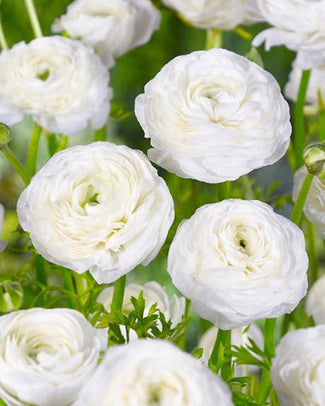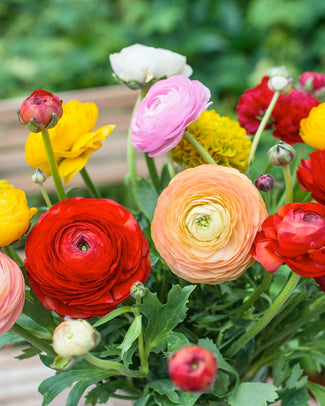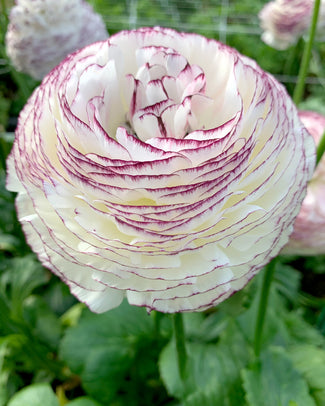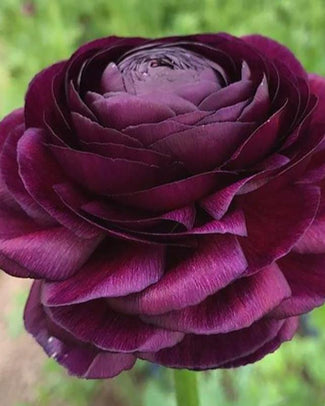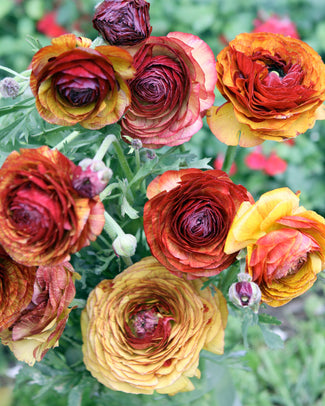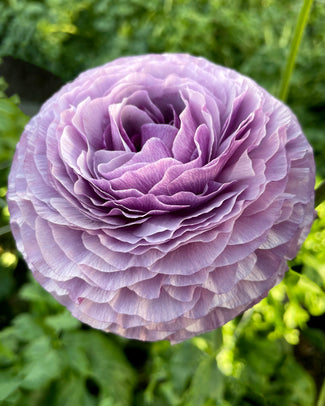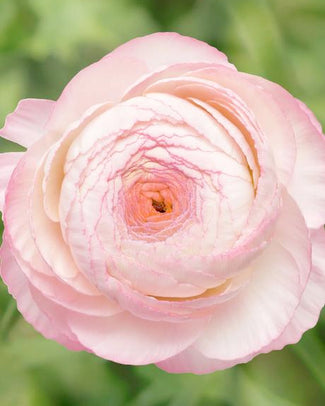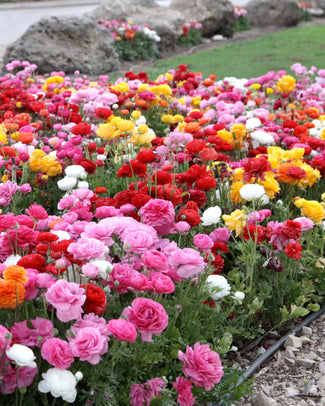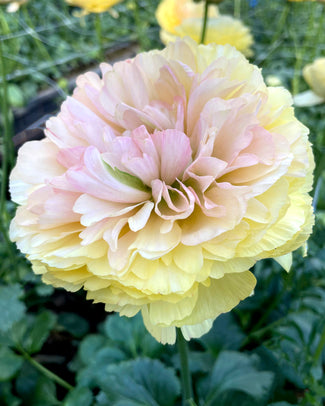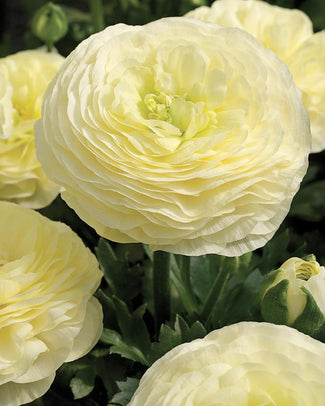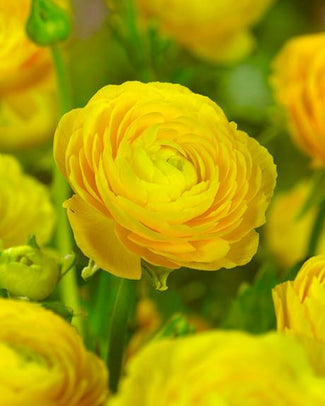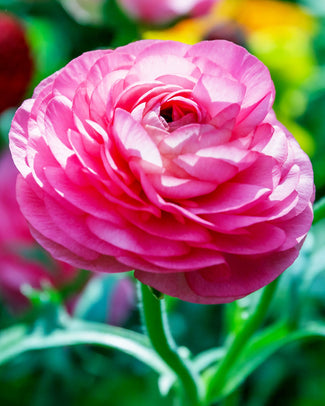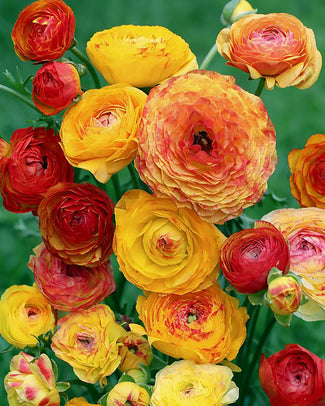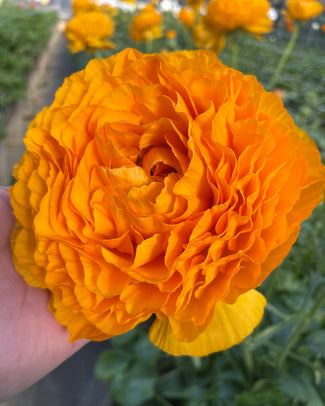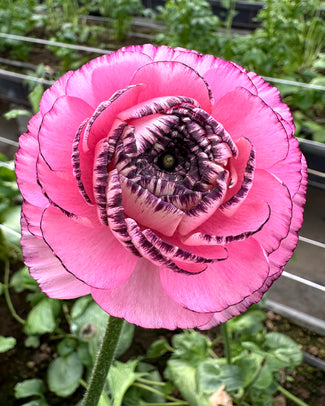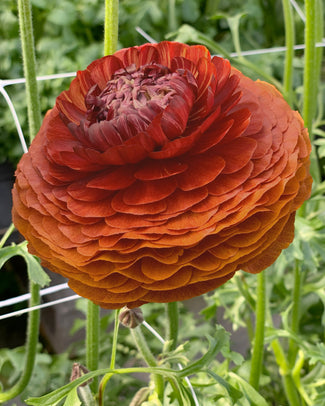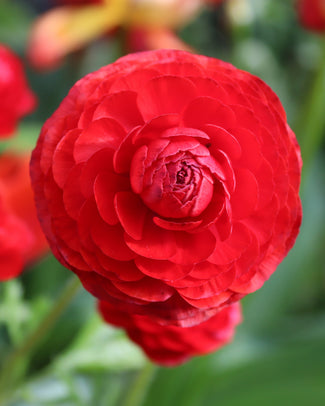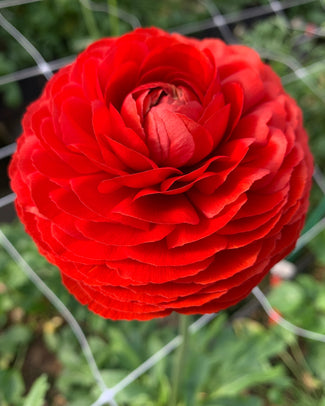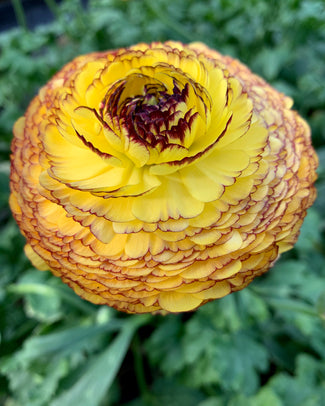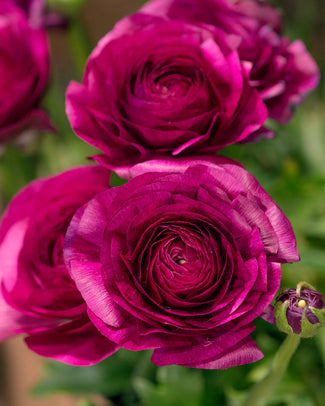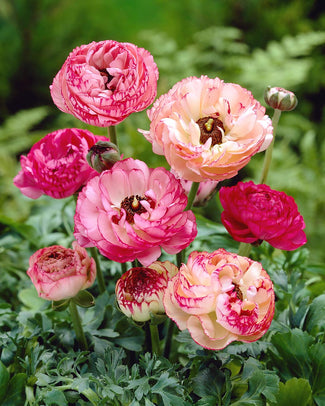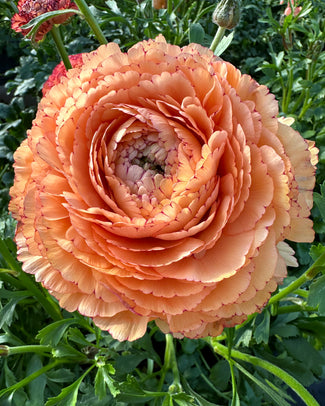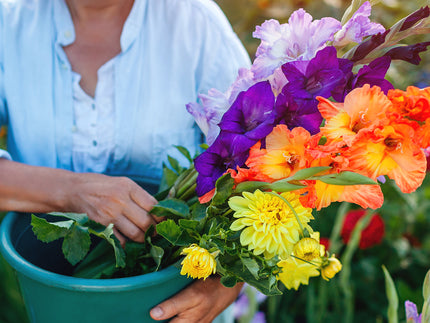How to grow Ranunculus
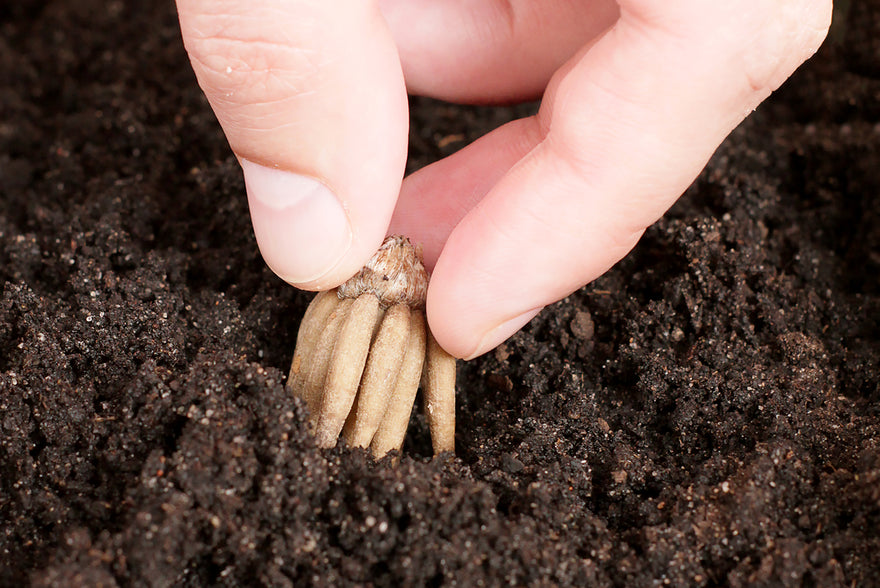
When you see these spectacular blooms, you’ll find it hard to believe they’re actually buttercups! Flaunting remarkably luxurious and intricate petal-packed flowers during spring and early summer, these are a world apart from their little yellow wildflower relatives. But their humble origin is partly what adds to their charm, making them easy to grow and resilient as well as incredibly beautiful. Ranunuculus have long been adored by gardeners and florists alike for their brilliant qualities – bred to perfection to produce the most stunning blooms, you’ll just love them in the garden as well as the vase!
A few planting basics
Ranunculus are grown from corms which look like claws. Thriving in a sunny spot, the lovely big blooms these plants produce will appreciate a warm, sheltered spot away from strong winds to keep them in top condition. Ranunuculus are half hardy, for best results it’s a good idea to start them off in pots and then transplant out into their final positions from mid spring. They’re particularly well suited to growing in patio containers, but also do very well at the front of a mixed flower border with rich, free-draining soil.
How to plant Ranunculus
— Ranunculus are half hardy and will need to be grown in a sheltered location over winter or in early spring.
— Soak the ‘claws’ in plain water for 3-12 hours prior to planting.
— Plant them directly into a sunny, sheltered border or patio container between April-June. If planting earlier, start them off in pots or cell trays in an unheated greenhouse to transplant out later in spring.
— Plant the ‘claws’ facing downwards, approximately 3-5cm deep, and water-in.
— After planting, keep the soil around your ranunculus plants hydrated but not soggy, and maintain regular watering throughout the growing season whenever the soil is dry.
Plant calendar
| Jan | Feb | Mar | Apr | May | June | July | Aug | Sep | Oct | Nov | Dec |
|---|---|---|---|---|---|---|---|---|---|---|---|
- Planting
- Flowering

















































































































































































